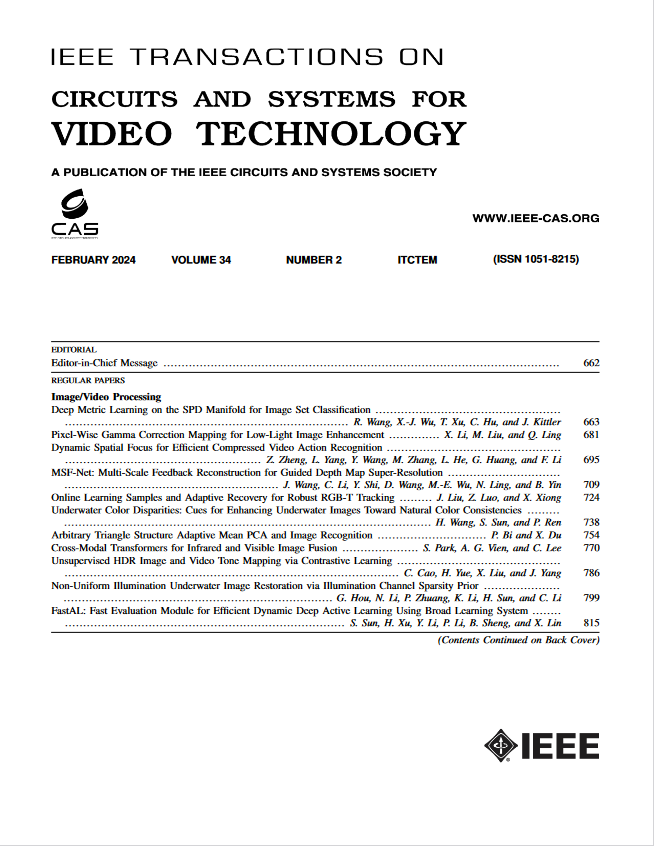Frequency Decoupled Domain-Irrelevant Feature Learning for Pan-Sharpening
IF 8.3
1区 工程技术
Q1 ENGINEERING, ELECTRICAL & ELECTRONIC
IEEE Transactions on Circuits and Systems for Video Technology
Pub Date : 2024-10-15
DOI:10.1109/TCSVT.2024.3480950
引用次数: 0
Abstract
Pan-sharpening aims to generate high-detail multi-spectral images (HRMS) through the fusion of panchromatic (PAN) and multi-spectral (MS) images. However, existing pan-sharpening methods often suffer from significant performance degradation when dealing with out-of-distribution data, as they assume the training and test datasets are independent and identically distributed. To overcome this challenge, we propose a novel frequency domain-irrelevant feature learning framework that exhibits exceptional generalization capabilities. Our approach involves parallel extraction and processing of domain-irrelevant information from the amplitude and phase components of the input images. Specifically, we design a frequency information separation module to extract the amplitude and phase components of the paired images. The learnable high-pass filter is then employed to eliminate domain-specific information from the amplitude spectrums. After that, we devised two specialized sub-networks (AFL-Net and PFL-Net) to perform targeted learning of the frequency domain-irrelevant information. This allows our method to effectively capture the complementary domain-irrelevant information contained in the amplitude and phase spectra of the images. Finally, the information fusion and restoration module dynamically adjusts the feature channel weights, enabling the network to output high-quality HRMS images. Through this frequency domain-irrelevant feature learning framework, our method balances generalization capability and network performance on the distribution of training dataset. Extensive experiments conducted on various satellite datasets demonstrate the effectiveness of our method for generalized pan-sharpening. Our proposed network outperforms state-of-the-art methods in terms of both quantitative metrics and visual quality, showcasing its superior ability to handle diverse, out-of-distribution data.求助全文
约1分钟内获得全文
求助全文
来源期刊
CiteScore
13.80
自引率
27.40%
发文量
660
审稿时长
5 months
期刊介绍:
The IEEE Transactions on Circuits and Systems for Video Technology (TCSVT) is dedicated to covering all aspects of video technologies from a circuits and systems perspective. We encourage submissions of general, theoretical, and application-oriented papers related to image and video acquisition, representation, presentation, and display. Additionally, we welcome contributions in areas such as processing, filtering, and transforms; analysis and synthesis; learning and understanding; compression, transmission, communication, and networking; as well as storage, retrieval, indexing, and search. Furthermore, papers focusing on hardware and software design and implementation are highly valued. Join us in advancing the field of video technology through innovative research and insights.

 求助内容:
求助内容: 应助结果提醒方式:
应助结果提醒方式:


